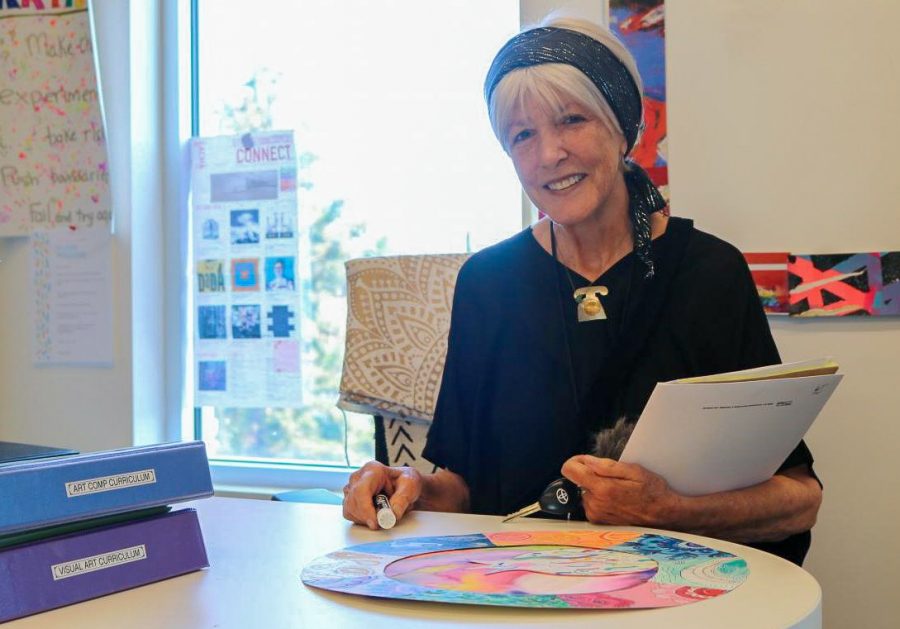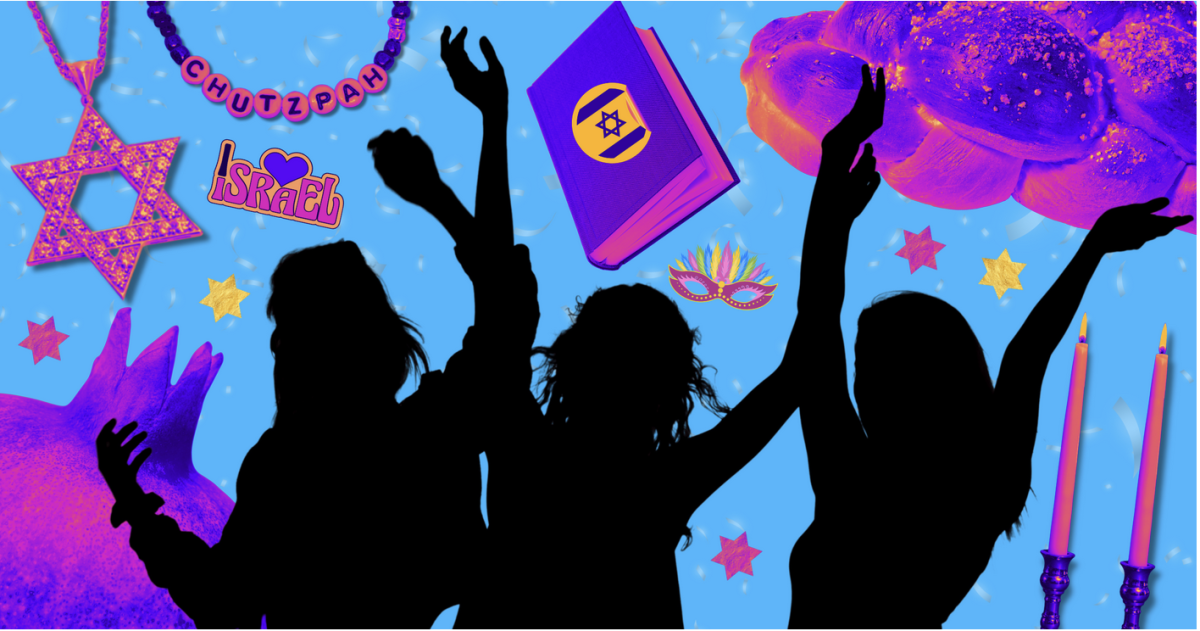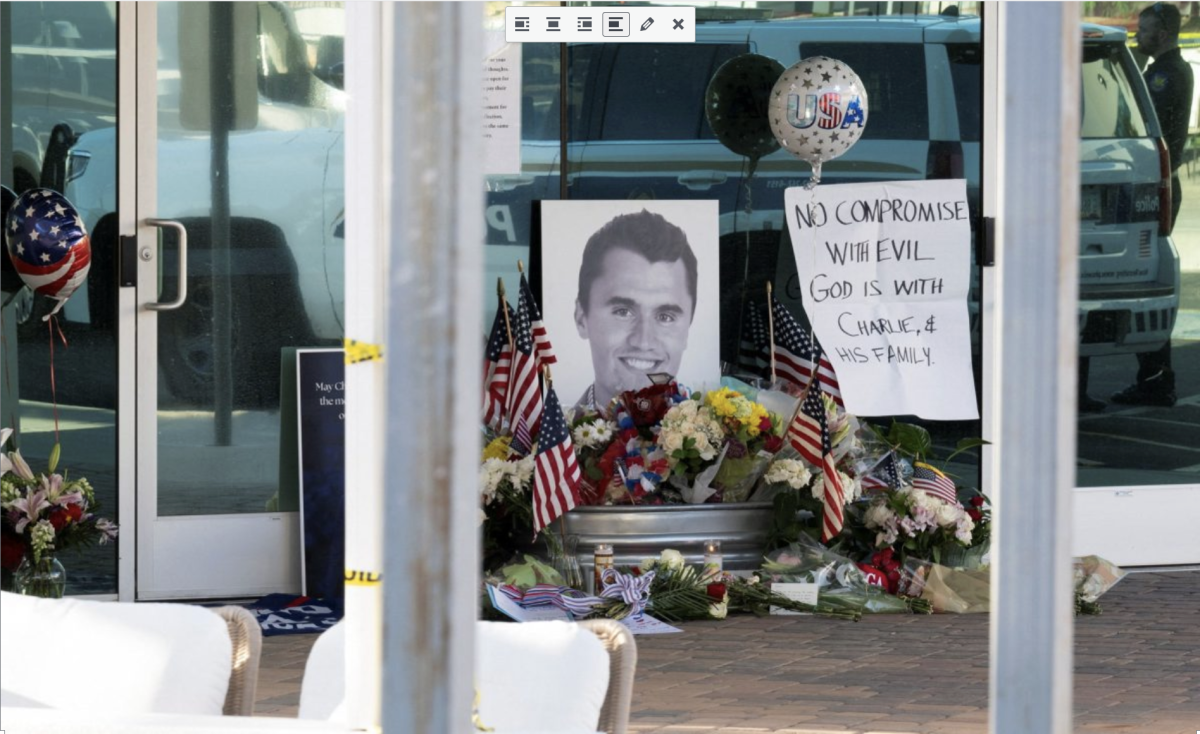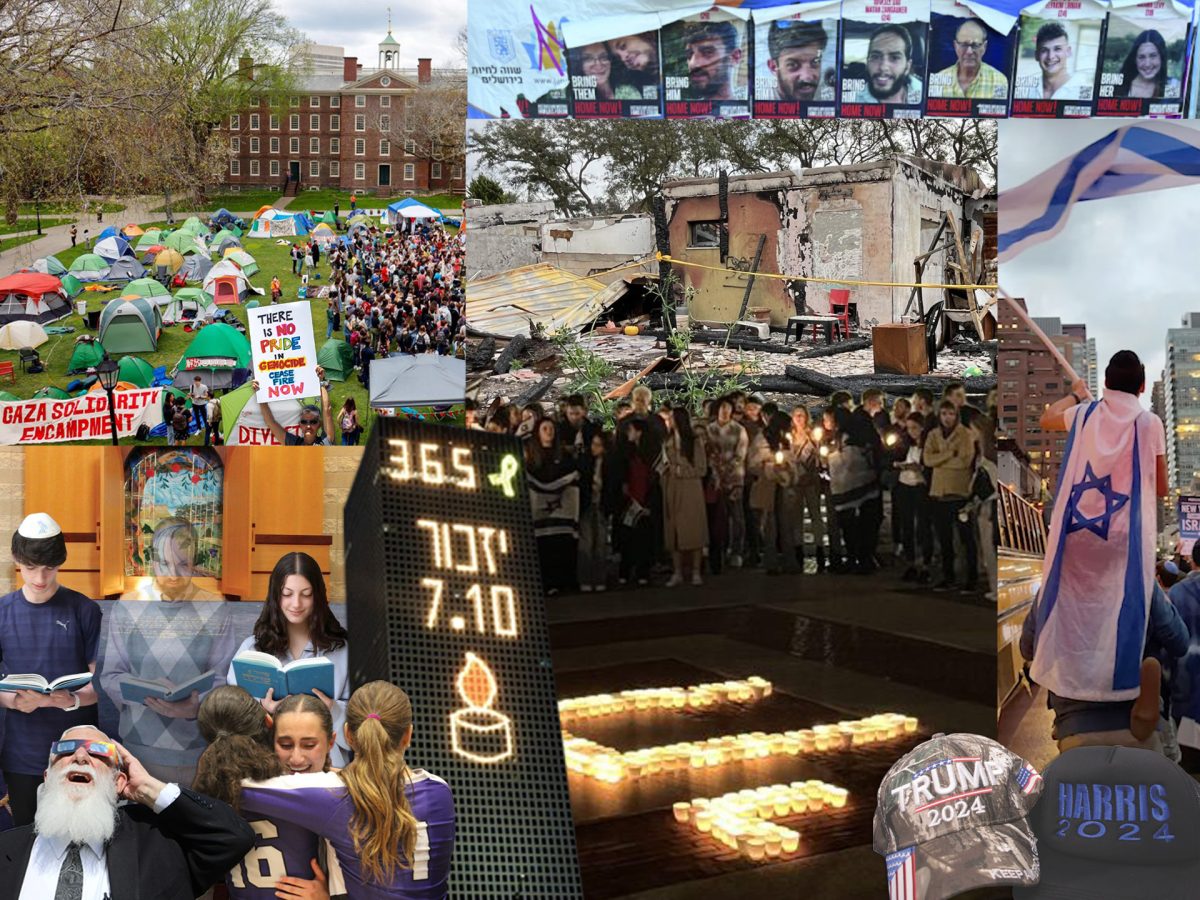Ms. Roen Salem, who inspired more than a generation of Shalhevet art students with her creativity, quirkiness and belief that anyone could be great at art, passed away yesterday morning at the age of 76.
She died surrounded by her family at her home in West Los Angeles after an almost three-year battle with cancer. She had continued to teach throughout her illness, and worked into October when she retired for health reasons.
Ms. Salem, known by her students and everyone else simply as Roen, was brought to Shalhevet by Dr. Jerry Friedman when the school first opened in 1992. For at least the past 10 years, she was the only teacher still on staff who was present at its founding.
During nearly three decades, she taught 10th-grade Composition and Design, AP Studio Art and Design and SAS Art to hundreds of students. She also led the Visual Arts Department, which for a time had three teachers including one who taught only sculpture. Eventually it was reduced to just Roen and merged with the Performing Arts Department – music and drama – to become the Art & Performing Arts Department, which she also led.
Shalhevet art teacher Ms. Samantha Garelick, who had known her for the last eight years, said Roen could turn ordinary objects into unique and magical pieces of art.
“She can be walking down the street and find a piece of a branch that has an interesting shape, and two days later she’ll have created an incredible art installation all using recycled materials around that branch that could be hanging in an art museum,” said Ms. Garelick in an interview when Roen retired in October.
“She just has an amazing way at looking at normal things and turning them into incredible pieces of art and I miss just being around her energy.”
Dr. Jerry Friedman, former Head of School and Shalhevet’s founder, said Roen was one of the first teachers he hired.
“We wanted to make Shalhevet a school that had the arts, music, drama, and she was just fantastic and as soon as we had her, she has an energy that was within her, and to see her you knew you were going to have a tough teacher,” said Dr. Friedman. “She just was great and we found a winner and we kept her all the way through.”
Dr. Friedman recalled when a donor offered to pay to have Shalhevet to change the school colors to blue and white. When it was brought before Town Hall to be discussed, Roen disagreed with him, he said.
“I was pitching for some reason this aspect of saying, ‘Hey it’s not a bad idea to change the colors, it doesn’t cost us anything, etcetera,’” said Dr. Friedman, “and Roen believing in the methodology and the approach, she got up and she said, ‘Well Dr. Friedman, I don’t think there’s anything wrong with our colors, they’re really hot and I think we should retain the colors we have.’”
Roen was known for decorating the school hallways with art, to brighten them with color and so that all students would be able to enjoy the creativity of their peers.
Alumnus Hillel Smith ‘02, a former student of Roen’s who is currently a professional artist, muralist and graphic designer, said that in Shalhevet’s old building – a former convalescent hospital – Roen designed the art room door and brightened it up with colors.
“When Shalhevet moved from the JCC to its new home on Fairfax for my sophomore year, the entire building was painted various shades of institutional gray,” Hillel wrote in an email response to Boiling Point questions.
“Roen spent days that year meticulously covering the entire door to her classroom in a mosaic of brightly colored squares of tissue paper. That colorful door lasted for years as a vibrant beacon in a dull hallway. It outlasted multiple renovations and multiple administrations, as a testament to her power.”
Drama director Ms. Emily Chase said Roen was “the germinator of the visual arts program and the creator of the beauty on the walls.”
“[She was] also kind of a matriarch of Shalhevet,” she added, “in terms of being religious but un-judgmentally so and very nurturing, filled with fun and light, creating a warm, intimate classroom where kids could be creative and be themselves and relax.”In 2000, she said, Roen helped design the sets for the school’s first play, A Shayna Maidel. It was Ms. Chase’s first year at Shalhevet and she had not yet started hiring professional set designers.
Deborah Kukurudz ‘06, who took Roen’s Composition and Design class as well as two years of AP Studio Art, said Roen played a role in her career choice to be an interior designer.
“She was just a huge inspiration and she allowed me to be creative and made me feel like it was okay to be creative,” said Deborah, who is the sister of senior Talya Kukurudz. “And you don’t have to be a doctor or a lawyer, and just follow your passion.”
Deborah still remembers things that Roen would tell her.
“For instance, she would always say always do everything in odds, odd numbers, odd numbers, and that’s literally how I do my business,” Deborah said. “I tell my clients, it has to be an odd number, never use even numbers, and that’s like a ruling thing that I learned. And that was like 12, 13 years ago and I still use that in my work today.”
Roen and her husband, retired orthodontist Dr. Donald Salem, have four children, Johanna Salem, Danielle Kassin, Ariel Shalem, and Nili Salem. Johanna, Ariel and Nili live in Israel, while Danielle lives in Los Angeles and is the Religious School Director at Sinai Temple.
Rebecca Elspas, class of ‘15, who took AP art, recalled how excited Roen was when her son visited Los Angeles from the Israeli army.
“She started making this beautiful welcome home sign since he was coming home to visit,” Rebecca wrote in a text message to the Boiling Point. “Of course it was beautiful, as all of her art is, and she painted the old city alongside it. She walked around the class talking about her son and parading around like a soldier, in the fun free spirited way she is, with her beautiful sign.”
Roen was born Nov. 11, 1945, in Chicago, Illinois. She was the oldest child and had one brother, who died of Covid early in the pandemic.
She studied art during college at the University of Illinois at Urbana-Champaign, then in the 1960’s taught art at a public school in Chicago.
She met her husband in 1963 at a Hillel event at the University of Illinois. They were married in 1967. Dr. Salem is now a lecturer at UCLA in orthodontics.
In 1968, the couple moved from Chicago to San Clemente, near Camp Pendleton where Dr. Salem was a dentist in the U.S. Army. The next year, he was deployed to Vietnam where he would work as a dentist until the middle of 1970.
Roen’s first child was born while he was away.
“My dad was just telling us this morning how it was probably one of the most horrific moments of his life, having to tell her that they were shipping him off to Vietnam,” said her son Ariel in an interview yesterday. “She was absolutely distraught, he said – probably one of the worst moments of their life together.”
While her husband was abroad Roen moved to Los Angeles and lived with his aunt in the San Fernando Valley. Upon his return from Vietnam, they moved from the Valley to Westwood.
Roen stayed home to care for the children, and in the 1980’s she taught art at Sinai Akiba Academy, where they went to school.
She began teaching art at Camp Ramah in Ojai in 1991 and then started at Shalhevet when it opened in 1992.
Roen’s son Ariel said his mom brought art to everyone she encountered and to every place she went. He said that for Passover she would make name cards for everyone where each person’s name had a picture of a plague, and when that plague came up the person would have to act out the picture on their card.
“So like anybody that had the art of the frog on their name card would have to say ‘ribbet ribbet,’” Ariel said yesterday. “For her, art was life. She was always looking to engage people artisitcally wherever she was.”
Ariel said his mother’s favorite projects for herself were either paintings on canvas or three-dimensional displays.
“There’s a lot of plastic junk floating around the planet from thousands of factories in China,” Ariel said, “and so I think instead of throwing things out she just collected things and then she would paint and then add – create a three-dimensional display by putting stuff over it, beads and buttons and leaves. So she was kinda an integrated artist who was doing something a little bit new and offbeat.”
The results were whimsical creations that were hard to describe but delighted the eye. Roen didn’t make much of them.
“She was extremely humble in relating to her own artistic abilities,” Ms. Garelick said yesterday. “She was an incredibly talented artist and would always just say “oh it’s nothing you know, I’m just spray-painting or drawing with a marker,’ but you know she would create these absolutely amazing pieces.”
A devoted Zionist and for many years active in AIPAC, Roen in the 1980’s worked on bringing Ethiopian Jews to Israel, even flying to Africa to deliver them food and medicine herself.
“The Jews [were] living under horrific conditions there, oppressed by both Christians and Muslims in Ethiopia, and that was a big hobby of hers – a big mission of hers in the 80’s and 90’s,” said Ariel.
“She was proactive in saving Ethiopian Jewry and bringing them to Israel and integrating them into Israeli society,” he said, “one of the most proactive women or men that were doing that type of work in the 80’s.”
In 1991 Roen would begin working at Camp Ramah in the summer, something she continued for almost 20 years. Ariel told the Boiling Point that she began working there to pay for his summer at the camp.
“I was sent there for the summer as a bar-mitzvah present from my grandmother, from her mother, and I came home, I said it was great and I said I want to go back next year and she said well we can’t afford it,” Ariel said. “Then she had an idea, ‘Maybe I should go teach there.’”
“She had a gift for creating projects for kids of all ages and abilities,” Hillel wrote. “She coached them all through unfamiliar media so they could make something they’d be proud of.
“And it was humbling to see how her art room was a haven for kids like me who could think of few things better to do on a lazy afternoon than chill with her and her treasure trove of art supplies.”
Ms. Garelick said that happened wherever Roen taught.
“She really helped the art room become a place of respite for a lot of students, and the same is true up at Camp Ramah for the art room there,” said Ms. Garelick.
Over time, those rooms became places not only of relaxation and creativity but of personal connection with Roen.
Hillel said that students would always go to the art room to hang out with her — even during class.
“Roen was the kind of teacher who inspired students to skip class so that they could hang out with her,” Hillel wrote. “I know, since I was one of those students.”
Deborah Kukurudz said that Roen spent a lot of time working with her on her art and recounted a specific memory when she wanted to paint a portrait of her grandmother.
“It was my grandmother’s 70th birthday, and I wanted to do a portrait of my grandmother,” said Deborah. “And I remember Roen and I spent a lot of time together to get the perfect picture of my grandmother. I just remember her sitting with me through it and really helping me, like, get the soul of my grandmother. That piece of art is still hanging in my grandparents’ living room to this day. So every time I look at it, it just makes me think of Roen and the time we spent creating that piece together.”
Ms. Chase said Roen became a mentor in parenting.
“She was just a great role model for me about how to raise kids who get along well together and kinda follow their journey and are good people,” said Ms. Chase. “And she was fun with her family. She taught me fun games to play at the Passover seder – you know her family continues to dress up and do skits and dance dances.”
But above all, they were places of inspiration and learning.
Ms. Keene said Roen would post signs on the art room’s cabinets and in doorways with words of wisdom by famous authors.
“I’d be running around on the third floor and my eye would catch something on a piece of paper on the open door to her room, and all afternoon I’d be thinking about it,” said Ms. Keene.
Ms. Keene has a painting by Roen, a swirling whirlpool of purples and blues with the word “good” positioned near the center. Its title is “Don’t Let Good Go Down the Drain.”
Roen also shared plenty of wisdom of her own.
“I was making this art project and I think I messed it up,” said Rebecca Elspas. “I put the wrong color on or something, or did a stroke not the way I liked it. I was just kind of disappointed about it and kind of frustrated.
“And she came over to me and was like, ‘Oh, art just happens, you know there is no such thing as a mistake,’ she would always say in Art. And everything can be made into something beautiful. She helped me use that mistake to make my painting still beautiful but just a little bit different.”
Roen’s funeral is set for today at 2 p.m. at Hillside Memorial Park in Los Angeles. Shiva at the Salem home in West L.A. will begin on Saturday night and last until Thursday morning. Shiva will occur outside and masks are required for anyone who wishes to attend.
Donations in memory of Roen can be made to Sinai Temple or the North American Conference on Ethiopian Jewry.
Alumna Anna Weiss ‘20, who took 10th-grade Composition and Design and two years of SAS Studio Art, said that Roen’s personality and view on life inspired her.
“She was never afraid to be herself,” said Anna. “She was very loud and fun and I guess as most high schoolers struggle with being insecure and maybe socially anxious and afraid about what they’re going to say, the way that they dress, whatever, she just showed me: Who cares? You live a long life. Be creative, be yourself, live your life, say whatever you want, you know – be weird.
“Especially when it came to art. Sometimes I would want to make weird things and she would love that, and it was just be yourself, do your own thing. That’s a big way that she inspired me, was to be authentic and genuine and not try to be something for other people.”
Originally published December 31, 2021 in The Boiling Point.
This story won Second Place in the 2022 Jewish Scholastic Journalism Awards in the category “News reporting on Jewish communities, religion, education, institutions, activism, culture, leaders or personalities. ”
JSPA Judges’ Comments: “This is a model obituary, fully exploring the beauty of a life. It includes the details of the person’s life and death, cause of death, survivors and plans for a memorial, and it uses many quotes from students and faculty and alumni who remember her. A touching portrait that drives home Roen’s impact on her community.”












